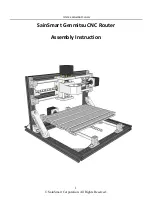
(Continued)
Description
Field
Security Options
This information applies to the 2.4 GHz WiFi network.
If you change the WiFi security, select one of the following WiFi security options for the router’s WiFi network:
•
None. An open WiFi network that does not provide any security. Any WiFi device can join the WiFi network.
We recommend that you do not use an open WiFi network.
•
WEP. Wired Equivalent Privacy (WEP) security is a legacy authentication and data encryption mode that is
superseded by WPA-PSK and WPA2-PSK. The WEP option displays only if you select Up to 54 Mbps from
the Mode menu. For information about configuring WEP, see
Configure WEP Legacy WiFi Security
84.
•
WPA2-PSK [AES]. This option is the default setting. This type of security enables WiFi devices that support
WPA2 to join the router’s 2.4 GHz WiFi network. If you did not change the passphrase, the default passphrase
displays. The default passphrase is printed on the router label (see
on page 14). WPA2 provides
a secure connection but some older WiFi devices do not detect WPA2 and support only WPA. If your network
includes such older devices, select WPA-PSK [TKIP] + WPA2-PSK [AES] security.
If you change the passphrase, in the Passphrase field, enter a phrase of 8 to 63 characters. To join the
router’s WiFi network, a user must enter this passphrase.
•
WPA-PSK [TKIP] + WPA2-PSK [AES]. This type of security enables WiFi devices that support either WPA
or WPA2 to join the router’s 2.4 GHz WiFi network. However, WPA-PSK [TKIP] is less secure than WPA2-PSK
[AES] and limits the speed of WiFi devices to 54 Mbps.
To use this type of security, in the Passphrase field, enter a phrase of 8 to 63 characters. To join the router’s
WiFi network, a user must enter this passphrase.
•
WPA/WPA2 Enterprise. This type of security requires that your WiFi network can access a RADIUS server.
For information about configuring WPA/WPA2 Enterprise, see
Configure WPA/WPA2 Enterprise WiFi Security
on page 85.
Wireless Network (5GHz a/n/ac)
The SSID is the 5 GHz WiFi band name. If you did not change the SSID, the default
SSID displays. The default SSID is also printed on the router label (see
page 14).
If you change the SSID, enter a 32-character (maximum), case-sensitive
name in this field.
Note
Name (SSID)
Manage the Basic WiFi Network Settings
81
Nighthawk AC1750 Smart WiFi Router Model R6700v2
















































